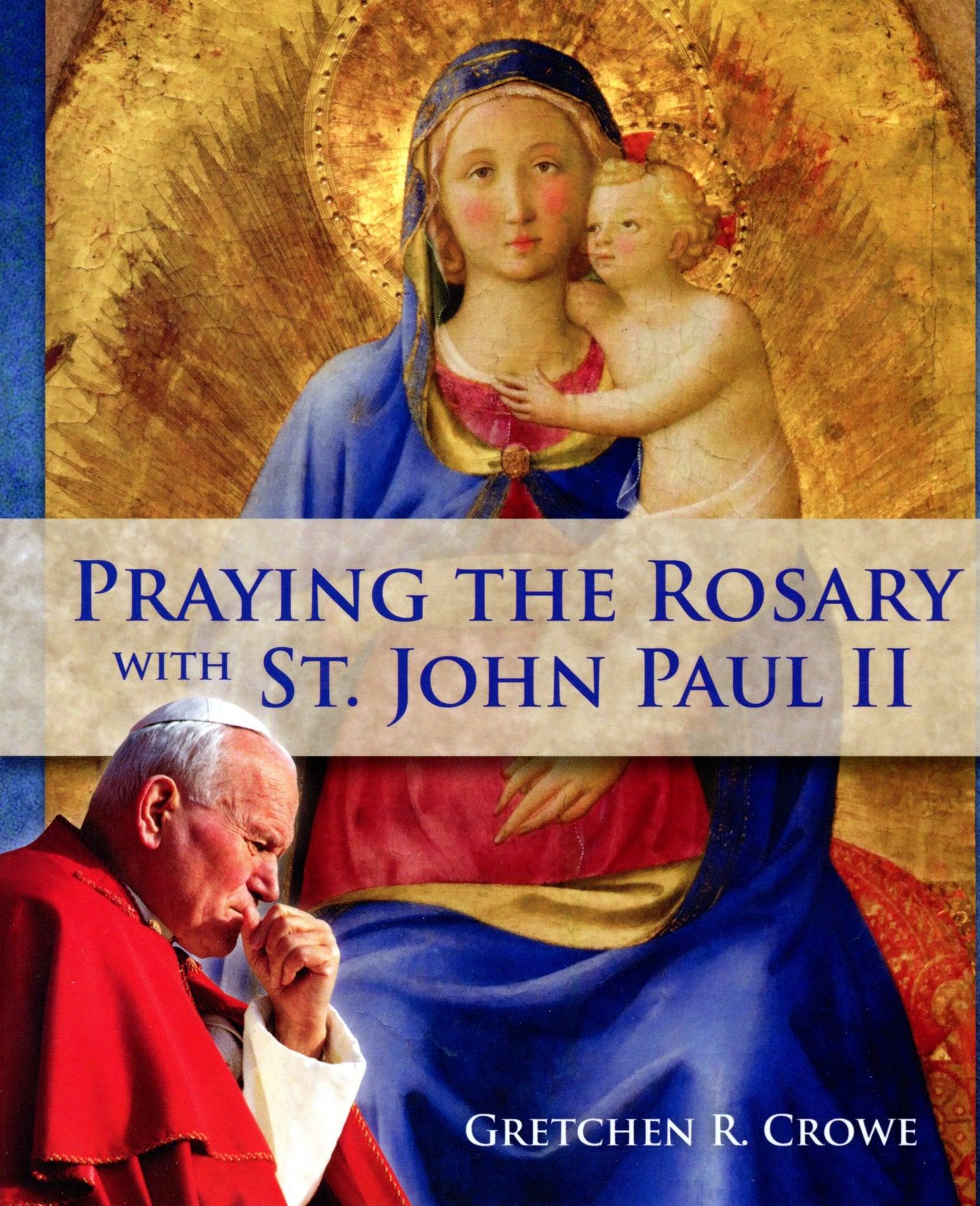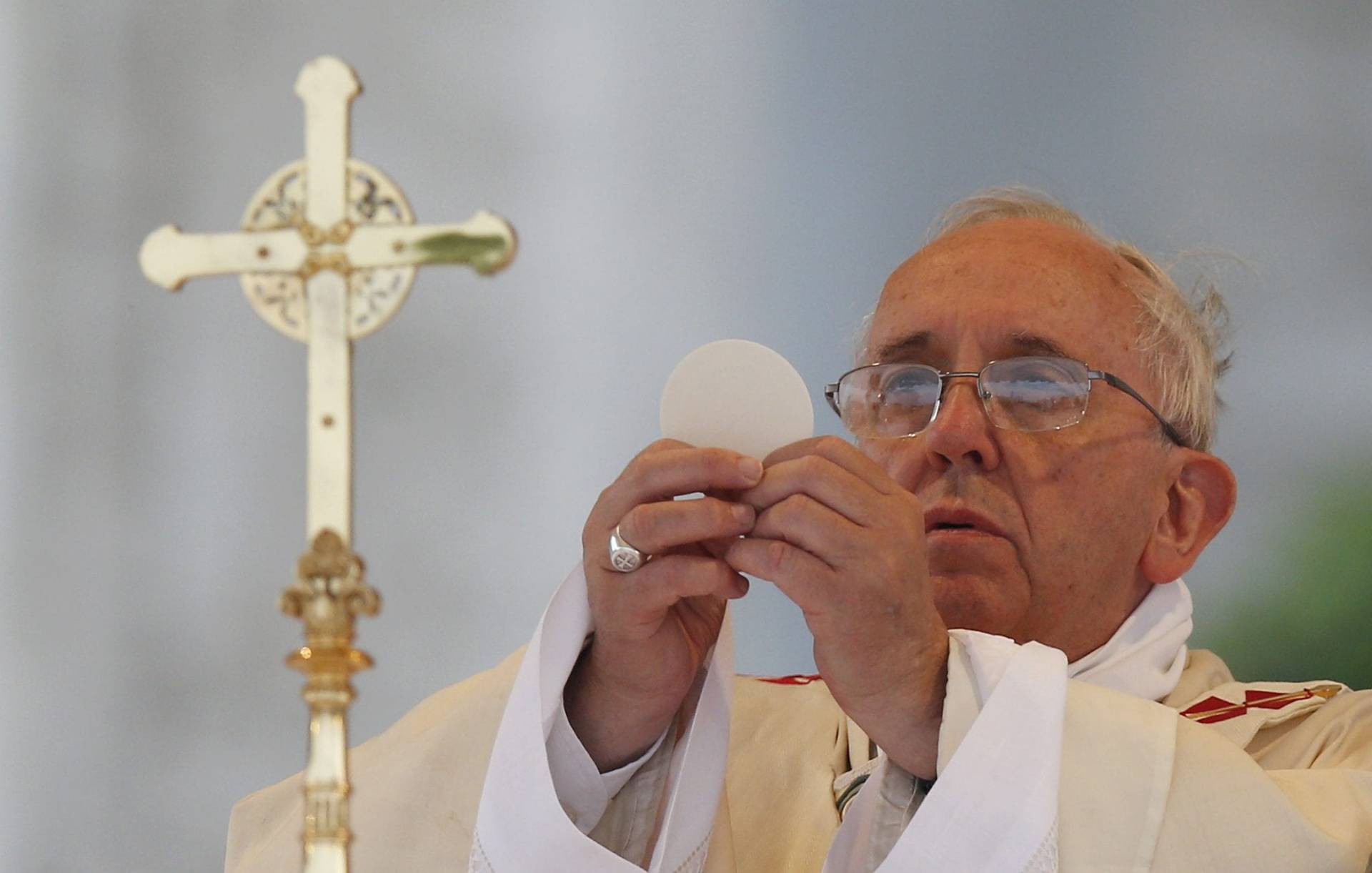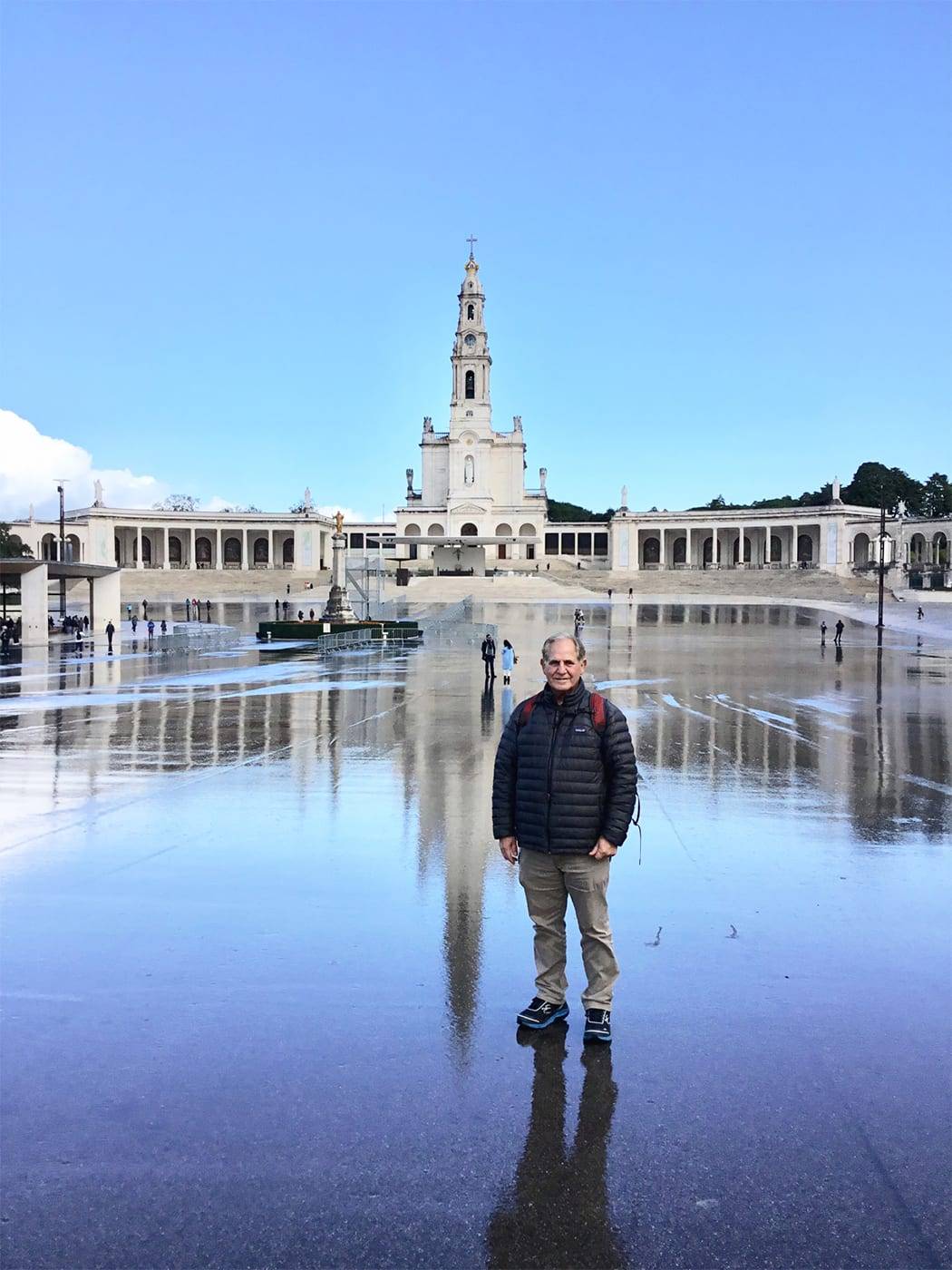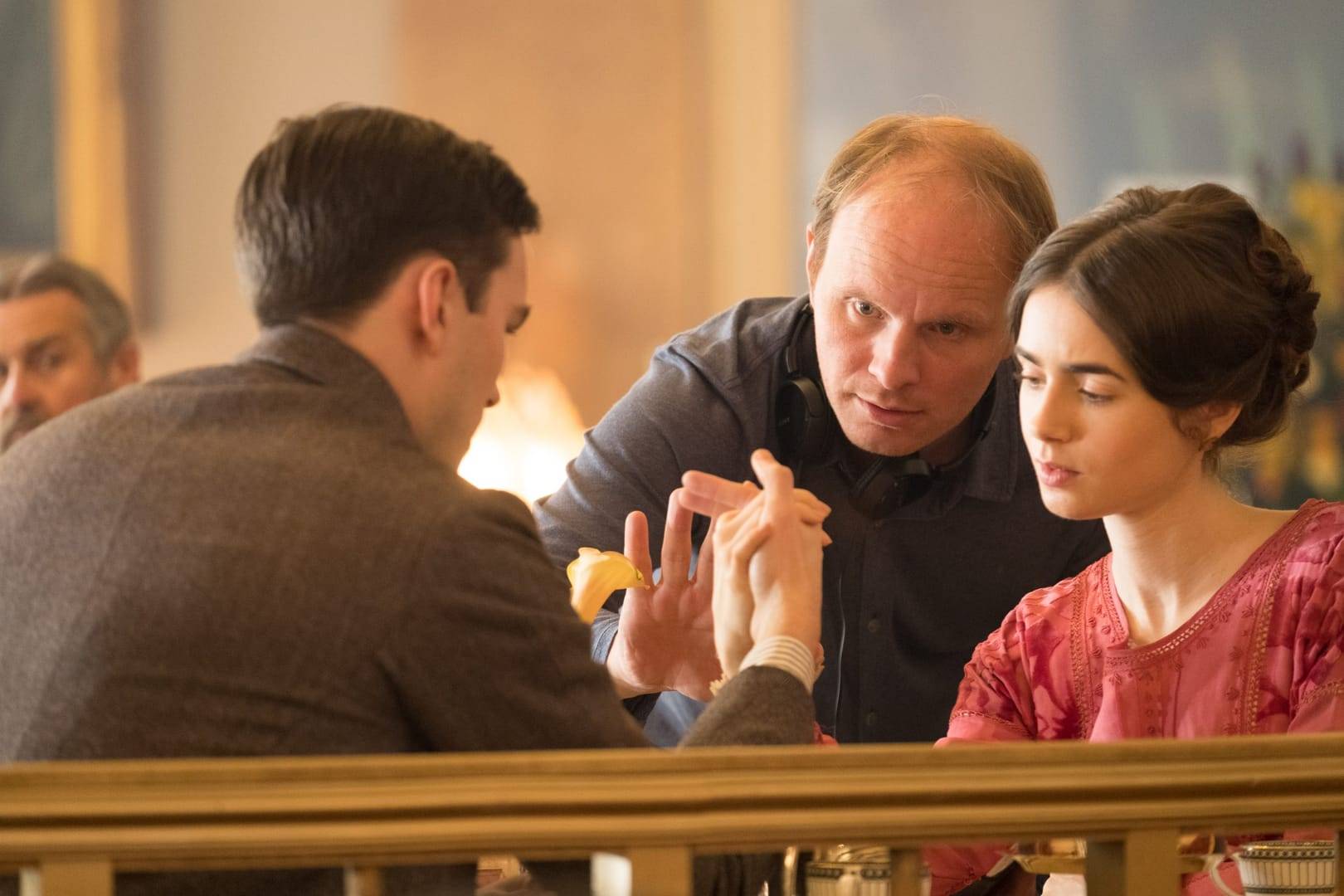When Alvaro Soares moved to the Boston area from Brazil in 1999, he found himself invited to a “Life in the Spirit” seminar at a local Catholic church — a meeting for prayer, worship, and discussion that promised to renew his faith.
A priest divided everyone into small groups. Four other believers laid their hands on Mr. Soares and prayed that he would receive “Baptism in the Holy Spirit.” He looked around and saw that “other people were having strong reactions — my wife and daughter were,” he said. “At first, I didn’t feel a thing. And then I suddenly felt peace. I began to speak in tongues later.”
What had just happened? Most people — including many Catholics — associate Catholic worship with staid hymns and a strict liturgy led by a priest. Sure, Catholics believe in miracles, but praying for divine healing, trembling in the aisles, or shouting streams of nonsense words at the whim of the Holy Spirit — isn’t that stuff that only boisterous Pentecostals do?
The answer is no: some Catholics have been praying this way since the charismatic renewal movement began almost 50 years ago (charisma is Greek for “gift of grace”). At a time when the Church is in the international spotlight and many wonder how Rome will weather the challenges of secular modernity and internal scandal, charismatic Catholicism has emerged as one of the most vibrant subcultures in the global faith.
Charismatic renewal began among American Protestants in the late 1950s, when a handful of Lutherans in Minnesota and Episcopalians in California felt pushed by the Holy Spirit to speak in tongues (according to the Book of Acts, the Holy Spirit bestowed the gift of foreign languages upon the Apostles at Pentecost — but most modern-day disciples pray and shout in meaningless speech-like sounds). The revival spread to Catholicism in 1967, when students and faculty at Duquesne University, a Catholic school in Pittsburgh, announced that they, too, had been “baptized in the Spirit.”
The charismatic renewal movement became the most formidable religious revival of the 20th century: a global phenomenon that had left almost no Christian community untouched by the time it began to taper off in the mid-1970s. Protestants and Catholics who had always preferred calm and “respectable” worship, who viewed Pentecostals as their embarrassing cousins, suddenly embraced Pentecostal practices like praying in tongues, divine healing, and surrendering physical control of their bodies to the Holy Spirit.
The church hierarchy in Rome was wary of the movement at first, but ultimately decided to affirm the revival as an outpouring of divine grace in a trying secular age.
“Some day, when the history of our time is truly told, one of the things we’ll see is that the salvation of popular Catholicism in the US in the 1970s was, in many ways, the charismatic movement,” said Mark Shea, a Catholic writer who converted to the faith from evangelicalism.
In the post-Vatican II era of ecumenical good feelings, some hoped that the movement would bring Protestants and Catholics closer together. Evangelicals — long more united in their anti-Catholicism than anything else — watched the movement with interest. Sometimes they found themselves worshipping alongside Catholics at charismatic renewal conferences.
In 1969, four Cistercian monks worked up the courage to attend a Pentecostal prayer meeting in southern California. As soon as they arrived, “our presence and monastic identity were sounded abroad, and in short order we found ourselves handshaked and blessed half-to-death, and welcomed like the proverbial long lost brother,” one monk reported.
But other evangelicals were smug, and assumed that as soon as Catholics experienced this new kind of worship they would leave Rome and become Protestants. Sometimes they did: one scholar who surveyed charismatic Protestant churches found that 28% of respondents were raised Catholic. But more often, charismatic Catholics became, well, more Catholic.
“Catholic charismatics are talking about a rediscovery of Mary, the sacraments, the rosary, the saints, and other traditional beliefs and practices,” wrote a contributor to the Catholic magazine New Covenant in 1970.
At first glance, this renaissance of church tradition seems counter-intuitive. After all, believers who pray for Baptism of the Holy Spirit are seeking to leapfrog back more than 2,000 years and experience the same miracle that shook the Apostles at Pentecost. Pentecostal Protestants often insist that they have little to learn from church history after the 1st century, saying theirs is the faith of biblical times.
But among charismatic Catholics, contact with the Holy Spirit is no different from the other Catholic means of touching the divine, whether it’s praying to the saints or consuming the body and blood of Christ during the Mass. Their prayer meetings echo the ancient culture of confraternities, voluntary associations of laypeople that prayed together and did good works during the Middle Ages. The appeal of charismatic prayer “starts with praise and worship,” said Mr. Soares, who is now director of Charismatic Renewal Services for the Archdiocese of Boston. “But as you get deeper, you start to see other things besides just the amen and hallelujah. You see people more rooted in their history.”
“Roots” can mean many things to American Catholics, a community in which non-whites may soon become a majority (in 2013 60% of Catholics were white, while Latinos accounted for 34%). Many come from more expressive cultures of worship and feel more at home with their hands in the air, shouting in tongues at a prayer meeting, than they do in a traditional Irish or Italian Catholic parish (the appeal of charismatic renewal in the Global South – Africa, Latin America, and developing Asia — was never lost on authorities in Rome).
In Boston, African, Caribbean, and Latin American Catholics account for a large proportion of the charismatic community, and nationwide it is increasingly a non-white movement. According to a 2007 poll by Pew, more than half of Latino Catholics in the US identify as charismatic, while only 12% of non-Latinos do.
Today the center of gravity in the Christian world is shifting from white to black and brown, and from the West to the Global South. Rome is wise to embrace the style of worship in which many of these believers feel most at home. Pope Francis once derided charismatic Catholicism as a “school of samba,” but eventually he came around, and the Church tapped him to help lead charismatic renewal in Argentina. When he addressed a massive gathering of charismatics in Rome this past June, he praised their exuberance, urged them to continue evangelizing the unconverted, and also to be “close to the poor.”
Francis is known for irking some conservatives by emphasizing social justice over hot-button cultural issues. His remarks raise an interesting question: Are charismatic Catholics in America “conservative” or “liberal”? Will the movement have political consequences?
In the 1960s and 1970s, the bridges that the movement created between white conservative evangelicals and white Catholics may have laid the groundwork for their political collaboration in the Christian Right through interfaith organizations like the Moral Majority. But many Catholics — who interpret “pro-life” to include supporting economic equity and dignity for the poor as well as opposing abortion — have never fit easily into the categories of the culture wars. Latino Catholics, especially sensitive to the injustices built into American economic and social structures, have voted overwhelmingly Democrat in the last four presidential elections. In many charismatic prayer groups, Baptism in the Holy Spirit is not just a private spiritual experience, but a believer’s gateway to service in the church and the community: helping one’s fellow man is a kind of worship no less important than private prayer or Sunday Mass.
But that doesn’t mean charismatics are “liberal” either. According to the Pew poll, they are far more likely than non-charismatics to believe that the “Bible is the literal word of God” and that Jesus will return in their lifetime. “Charismatics tend to be very obedient to what the Church says,” said Mr. Soares. “So if they say there will be women’s ordination, we will be obedient to that. If the Church says no, we say no. We are committed to social justice because we are aligned with the Church. Pope Francis is aligned with social justice — that’s the viewpoint that most of these people are going to vote for.”
Fifty years on, charismatic renewal has gone the way of most religious movements: It has become less a spontaneous revival than a well-coordinated subculture of conferences, ministries, and prayer groups. Pope Francis warned the charismatics in Rome that too much organization was a danger: “Yes, you need organization, but do not lose the grace of letting God be God!” They seem to be maintaining the right balance.
Charismatic worship has become one of the primary expressions of Catholicism around the world, and every religious revival must find ways to become routine in order to survive over the long term. If the Catholic Church has proven to be good at anything, it’s long-term survival.
Molly Worthen is an assistant professor at the University of North Carolina-Chapel Hill, where she teaches courses in global Christianity, North American religious and intellectual culture, and the history of politics and ideology.














